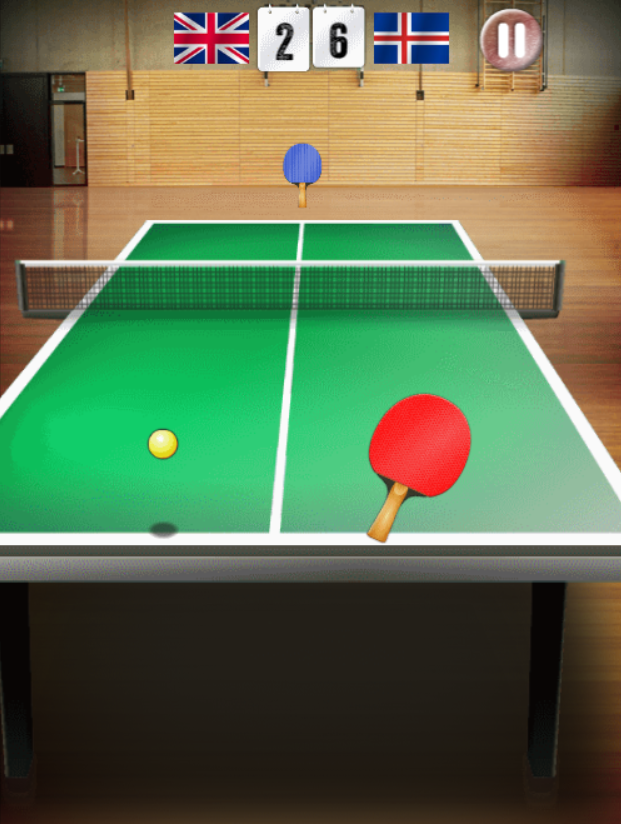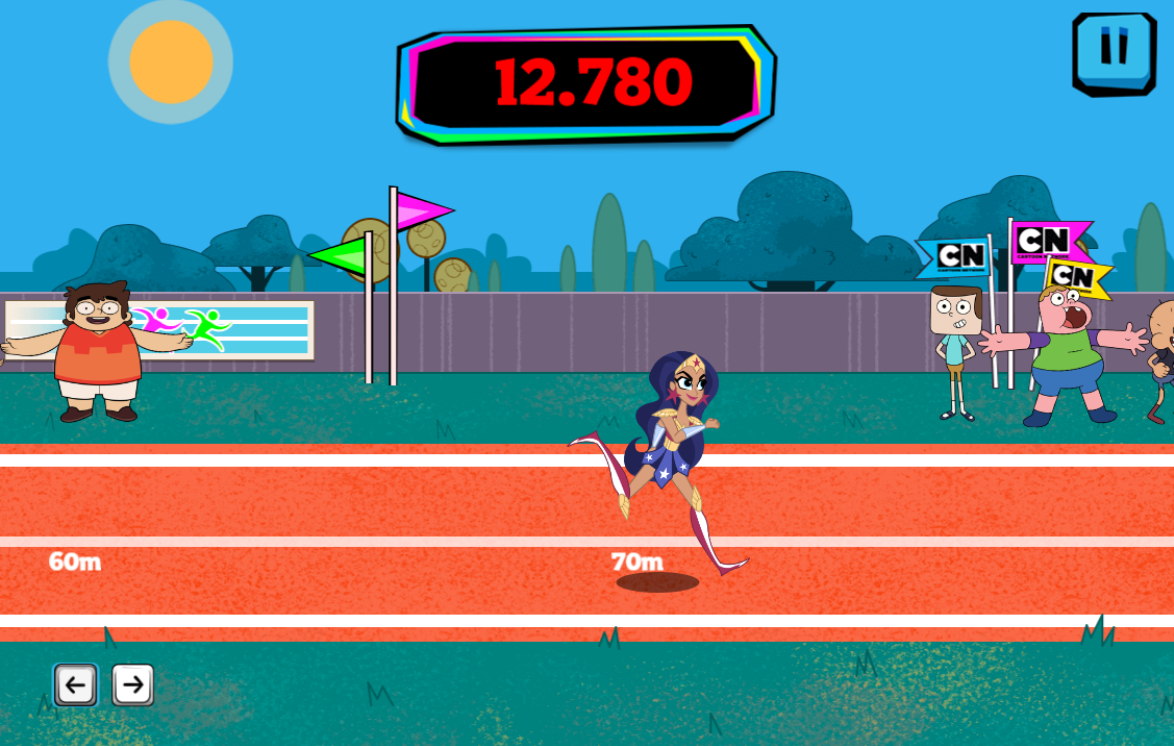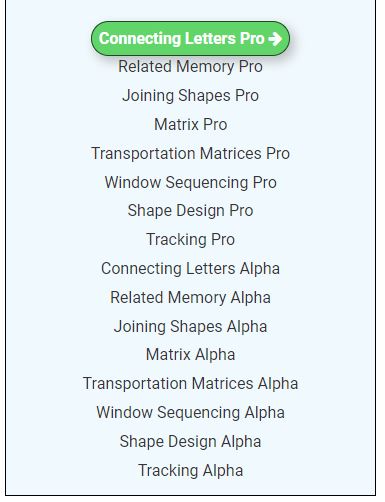| 1 |
Player’s performance has been measured based on the number of errors, accomplishments, and time spent |
The player's performance has been measured based on the number of errors, accomplishments, and time spent guideline suggests that designers should design games or products in a way that allows the performance of the player to be measured based on various criteria, such as the number of errors made, the accomplishments achieved, or the time spent playing or interacting with the game or product. This can involve tracking and displaying various types of performance metrics to the player, such as scores, rankings, or achievements. By measuring the player's performance in this way, designers can provide feedback and guidance to the player, and can help to create a sense of challenge and progress. It is important to consider the specific goals and objectives of the game or product, as well as the needs and abilities of the target audience, when designing the performance measurement system. By measuring the player's performance in a meaningful and relevant way, designers can create a more engaging and enjoyable experience for the player. |

|
https://el.y8.com/games/table_tennis-_world_tour
|
no
|
| 2 |
Assistive mechanism has been given to players with lower performance than the expected one |
The assistive mechanism has been given to players with lower performance than the expected one guideline suggests that designers should design games or products in a way that provides an assistive mechanism or support for players who are struggling or performing below the expected level. This can involve providing hints, tips, or other forms of guidance to help players understand and overcome challenges, or providing options or features that allow players to customize the difficulty or complexity of the game or product. By providing an assistive mechanism for players with lower performance, designers can help to prevent frustration or disengagement, and can create a more inclusive and accessible experience for all players. It is important to consider the specific needs and abilities of the target audience when designing the assistive mechanism, and to choose mechanisms that are appropriate and effective for that audience. |
—
|
—
|
no
|
| 3 |
Feedback is available for the player |
The feedback is available for the player guideline suggests that designers should design games or products in a way that provides feedback to the player on their performance or progress. This can involve displaying scores, rankings, or other types of performance metrics, as well as providing more detailed feedback on specific actions or decisions made by the player. Feedback can help to create a sense of progress and accomplishment for the player, and can also provide guidance and direction for future play. It is important to consider the specific goals and objectives of the game or product, as well as the needs and abilities of the target audience, when designing the feedback system. By providing appropriate and relevant feedback to the player, designers can create a more engaging and enjoyable experience for the player. |

|
https://www.cartoonnetworkhq.com/games/teen-titans-go-summer-games/play
|
no
|
| 4 |
Feedback indicates skills that need to be improved |
The feedback indicates skills that need to be improved guideline suggests that designers should design the feedback system in a game or product in a way that helps players identify and understand the skills or areas that they need to improve in order to be successful. This can involve providing more detailed or targeted feedback on specific actions or decisions made by the player, and highlighting areas where the player may be struggling or underperforming. By providing feedback that indicates skills that need to be improved, designers can help players to identify their weaknesses and areas for growth, and can provide guidance and support for improving those skills. It is important to consider the specific goals and objectives of the game or product, as well as the needs and abilities of the target audience, when designing the feedback system. By providing feedback that helps players to identify and improve their skills, designers can create a more effective and meaningful learning experience for the player. |
—
|
—
|
no
|
| 5 |
Feedback shows how the skills can be improved |
The feedback shows how the skills can be improved guideline suggests that designers should design the feedback system in a game or product in a way that provides guidance and support for players to improve the skills or areas that they are struggling with. This can involve providing specific recommendations or strategies for how players can improve their performance or overcome challenges, or providing additional resources or support to help players learn and develop new skills. By providing feedback that shows how skills can be improved, designers can help players to take an active and proactive approach to learning and development, and can provide the support and guidance that they need to succeed. It is important to consider the specific goals and objectives of the game or product, as well as the needs and abilities of the target audience, when designing the feedback system. By providing feedback that helps players to understand and improve their skills, designers can create a more effective and meaningful learning experience for the player. |
—
|
—
|
no
|
| 6 |
Feedback demonstrates the main goals to focus |
The feedback demonstrates the main goals to focus guideline suggests that designers should design the feedback system in a game or product in a way that helps players understand the main goals or objectives that they should be focusing on. This can involve providing clear and concise feedback on the progress that the player is making towards specific goals, or highlighting the most important goals or objectives that the player should be working towards. By providing feedback that demonstrates the main goals to focus on, designers can help players to understand the overall structure and progression of the game or product, and can provide guidance and direction for their play. It is important to consider the specific goals and objectives of the game or product, as well as the needs and abilities of the target audience, when designing the feedback system. By providing feedback that helps players to understand and focus on the main goals of the game or product, designers can create a more effective and meaningful learning experience for the player. |
—
|
—
|
no
|
| 7 |
Feedback shows the player’s common mistakes |
The feedback shows the player's common mistakes guideline suggests that designers should design the feedback system in a game or product in a way that helps players to identify and understand the mistakes that they are making, and to learn from those mistakes. This can involve providing specific and detailed feedback on the errors or mistakes that the player is making, as well as guidance on how to correct those mistakes or avoid them in the future. By providing feedback that shows the player's common mistakes, designers can help players to identify and address their weaknesses, and can provide support and guidance for improving their performance. It is important to consider the specific goals and objectives of the game or product, as well as the needs and abilities of the target audience, when designing the feedback system. By providing feedback that helps players to understand and learn from their mistakes, designers can create a more effective and meaningful learning experience for the player. |
—
|
—
|
no
|
| 8 |
Different levels of difficulty have been included |
The different levels of difficulty have been included guideline suggests that designers should design games or products in a way that includes multiple levels of difficulty, in order to provide a range of challenges and experiences for players. This can involve designing the game or product to be more or less difficult depending on the specific level that the player is on, or providing options or settings that allow the player to customize the difficulty of the game or product. By including different levels of difficulty, designers can create a more dynamic and engaging experience for players, and can provide a range of challenges that are appropriate for players of different skill levels. It is important to consider the specific goals and objectives of the game or product, as well as the needs and abilities of the target audience, when designing the levels of difficulty. By including a range of difficulty levels, designers can create a more enjoyable and satisfying experience for players. |

|
http://www.cs.ucy.ac.cy/projects/readistance
|
yes
|
| 9 |
Automatic difficulty adjustment system has been included |
The automatic difficulty adjustment system has been included guideline suggests that designers should design games or products in a way that includes an automatic difficulty adjustment system, which can automatically adjust the difficulty of the game or product based on the performance or progress of the player. This can involve using algorithms or other techniques to track the player's performance and adjust the game or product in real-time to provide a more appropriate level of challenge. By including an automatic difficulty adjustment system, designers can create a more dynamic and personalized experience for players, and can provide a range of challenges that are appropriate for players of different skill levels. It is important to consider the specific goals and objectives of the game or product, as well as the needs and abilities of the target audience, when designing the automatic difficulty adjustment system. By including this type of system, designers can create a more enjoyable and satisfying experience for players. |

|
http://www.cs.ucy.ac.cy/projects/readistance
|
yes
|
| 10 |
Activities allow expanding complexity |
The activities allow expanding complexity guideline suggests that designers should design games or products in a way that allows the complexity of the activities or tasks within the game or product to increase over time. This can involve designing activities that become more difficult or complex as the player progresses through the game or product, or providing options or features that allow the player to choose to increase the complexity of the activities. By allowing the complexity of the activities to expand, designers can create a more dynamic and engaging experience for players, and can provide a range of challenges that are appropriate for players of different skill levels. It is important to consider the specific goals and objectives of the game or product, as well as the needs and abilities of the target audience, when designing the activities and complexity. By allowing the complexity of the activities to increase over time, designers can create a more enjoyable and satisfying experience for players. |
—
|
—
|
no
|
| 11 |
Activities support player progression at the beginning of each level |
The activities support player progression at the beginning of each level guideline suggests that designers should design games or products in a way that provides support and guidance for players at the beginning of each level or stage of the game or product. This can involve providing introductory activities or challenges that help players to learn and understand the rules and mechanics of the game or product, or providing tutorials or other forms of guidance to help players get started. By supporting player progression at the beginning of each level, designers can create a more accessible and welcoming experience for players, and can help to ensure that players are able to successfully progress through the game or product. It is important to consider the specific goals and objectives of the game or product, as well as the needs and abilities of the target audience, when designing the activities and support for player progression. By providing appropriate support and guidance at the beginning of each level, designers can create a more enjoyable and satisfying experience for players. |
—
|
—
|
no
|
| 12 |
Tip system has been used in case of a real-time assistance |
The tip system has been used in case of real-time assistance guideline suggests that designers should design games or products in a way that includes a tip system, which can provide real-time assistance or guidance to players when needed. This can involve providing hints, tips, or other forms of guidance to help players understand and overcome challenges, or providing options or features that allow players to request assistance when needed. By including a tip system, designers can provide players with the support and guidance that they need to succeed, and can help to prevent frustration or disengagement. It is important to consider the specific goals and objectives of the game or product, as well as the needs and abilities of the target audience, when designing the tip system. By including a tip system that provides real-time assistance, designers can create a more enjoyable and satisfying experience for players. |
—
|
—
|
no
|
| 13 |
Tip system used suggestions of upcoming moves |
The tip system used suggestions of upcoming moves guideline suggests that designers should design the tip system in a game or product in a way that provides suggestions or recommendations for the player's next moves or actions. This can involve providing hints or tips that suggest strategies or approaches that the player can use to succeed, or providing guidance on what actions the player should take in order to progress through the game or product. By providing suggestions for upcoming moves, designers can help players to plan and strategize, and can provide guidance and support for making decisions in the game or product. It is important to consider the specific goals and objectives of the game or product, as well as the needs and abilities of the target audience, when designing the tip system. By including a tip system that provides suggestions for upcoming moves, designers can create a more enjoyable and satisfying experience for players. |
—
|
—
|
no
|
 Performance and Evaluation
Performance and Evaluation



